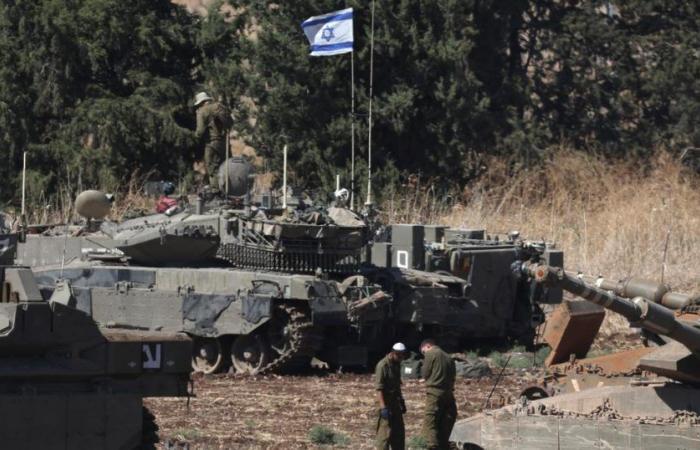Occupied and attacked several times in the past, Lebanon has maintained conflicting relations with Israel for more than 40 years. A look back at four key periods in their history which allow us to better understand the current situation in the Land of the Cedars.
The recent deadly Israeli attacks on Lebanese soil have put back on the agenda a long and old history between the two States. Although they have intensified since mid-September, the hostilities date back decades, well beyond the war in the Gaza Strip and escalations in the region. Summary of a story more than 40 years old.
1982 – THE ISRAELI OCCUPATION
If confrontations between Israel and Lebanon had remained relatively stable until then, the start of the Lebanese civil war in 1975 marked the beginning of more sustained Israeli interference. In 1978, Israel invaded part of southern Lebanon, deploying its soldiers on the border with the aim of repelling fighters from the Palestine Liberation Organization (PLO).
Four years after this invasion, for which the UN requests in a resolution for Israel to withdraw its forces from Lebanese territory, and in a context of regular attacks – although unequal – from both sides, the Jewish state reoccupies southern Lebanon, this time extending as far as Beirut . The stated objective of the invasion called “Peace in the Galilee” is to eliminate the Palestinian PLO militants established in Lebanon. The capital is bombed and surrounded.
It was in response to the Israeli occupation that Hezbollah was created the same year, in 1982. Both a paramilitary group and a political party, the Shiite Islamist movement – whose name means “Party of God” – is supported by the ‘Iran. Its creation was officially announced in 1985. Hezbollah then presented itself as a resistance movement which aimed to fight against the State of Israel and “eliminate” this “entity”.
>> Listen to the Point J episode dedicated to Hezbollah:
2000 – THE WITHDRAWAL FROM ISRAEL
The armed wing of Hezbollah, the Islamic Resistance in Lebanon, multiplies operations against the Israeli army, which then occupies a thousand km2 in the south of the country, as well as its auxiliary militia, the South Lebanon Army (SLA), composed of Shiites and Lebanese Christians. In 1993, then in 1996, the Jewish state led two vast murderous offensives in Lebanon which killed hundreds of people and created more than half a million refugees.
After carnage during this latest offensive in the town of Cana, in southern Lebanon, where the Israeli army bombed a UN camp sheltering civilians who had come to seek refuge, international calls for a ceasefire are increasing. An agreement to this effect was signed between Israel and Hezbollah after a fortnight of massive Israeli raids.
South Lebanon will nevertheless be occupied by Israel for four more years, until 2000, 22 years after the first Israeli invasion on Lebanese soil. This withdrawal is considered a failure for the Jewish state, to the benefit of Hezbollah.
Benefiting from a situation of relative calm after Israel’s withdrawal – occasional clashes still take place – the movement strengthened its political presence in Lebanon and gained government for the first time in 2005.
2006 – ISRAELI OFFENSIVE, THEN WITHDRAWAL
In 2006, a new confrontation led to a 33-day war in Lebanon. Hezbollah kidnaps two Israeli soldiers at the border with the aim of exchanging them for detainees in Israel. The Jewish state reacted by launching a vast offensive with devastating air raids. He also imposed a blockade and launched, at the same time, a new invasion of southern Lebanon.
In 33 days, 1,200 people were killed on the Lebanese side, mainly civilians, and 160 others on the Israeli side, mainly soldiers. A million people have also been displaced in Lebanon and 500,000 in Israel.
The war ends in a UN resolutionwhich provides for a cease-fire, the withdrawal of Israeli soldiers and the disarmament of Hezbollah in South Lebanon. A buffer zone is then established and 15,000 peacekeepers are deployed in the region.
>> See also the 7:30 p.m. topic which returns to the wars and clashes that Lebanon has experienced since the 1980s:
2024 – OPEN WAR WITH HEZBOLLAH
Israeli strikes and Hezbollah rocket fire on the border will continue sporadically until October 7, 2023. The day after the unprecedented attacks by Palestinian Hamas in Israel, which will mark the start of a particularly deadly war waged by the Israeli army in the Gaza Strip, Hezbollah launches rockets into the north of the Hebrew state in support of Hamas. Cross-border shootings between the Lebanese formation and the Israeli army are therefore daily.
>> See also the Focus reports in Lebanon and Israel:
In mid-September, simultaneous explosions of pagers and walkie-talkies belonging to members of Hezbollah killed 39 people and injured nearly 3,000 in Lebanon. About ten days later, the army of the Jewish state launched a massive and deadly bombing campaign in the country. The leader of Hezbollah, Hassan Nasrallah, and several members of the movement were killed during a strike on Beirut which destroyed several buildings in the southern suburbs. In total, more than a thousand people have died in Lebanon since mid-September, according to the Lebanese authorities, who also report nearly a million displaced people.
Last phase of this escalation, Israeli forces entered South Lebanon during the night from Monday to Tuesday to carry out “limited, localized and targeted ground raids”. Fighting is currently raging on the ground.
>> Our monitoring of the war in the Middle East: Hezbollah will continue to target Israel, announces the movement’s number two
Isabel Ares







